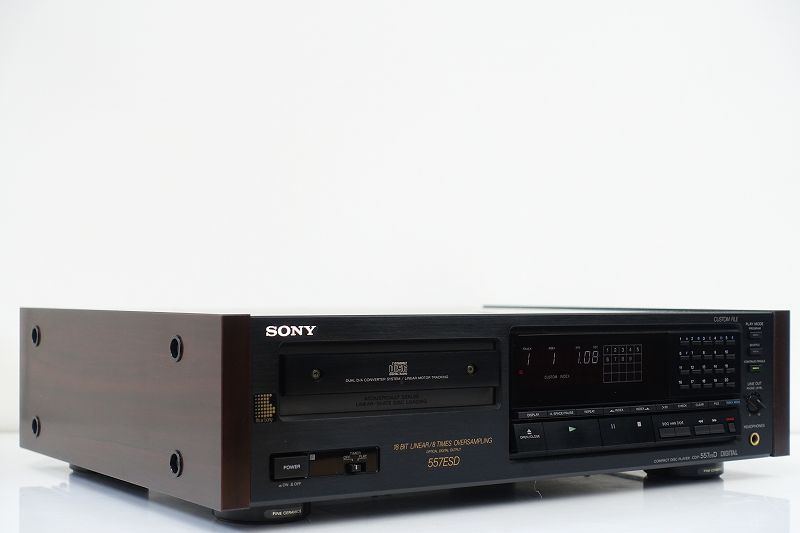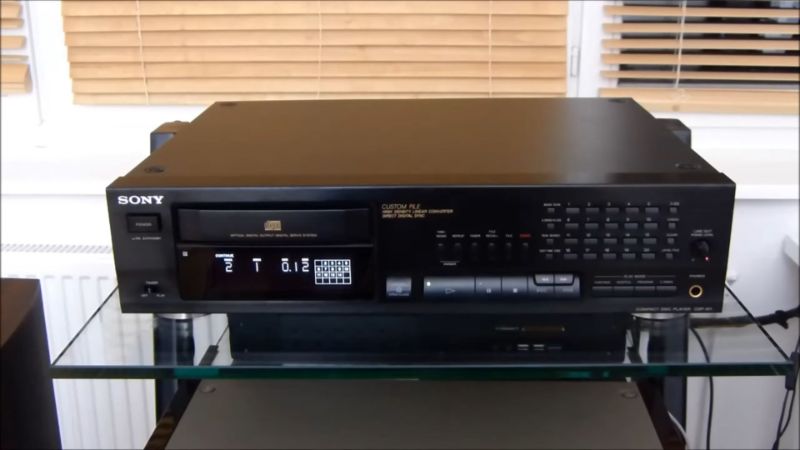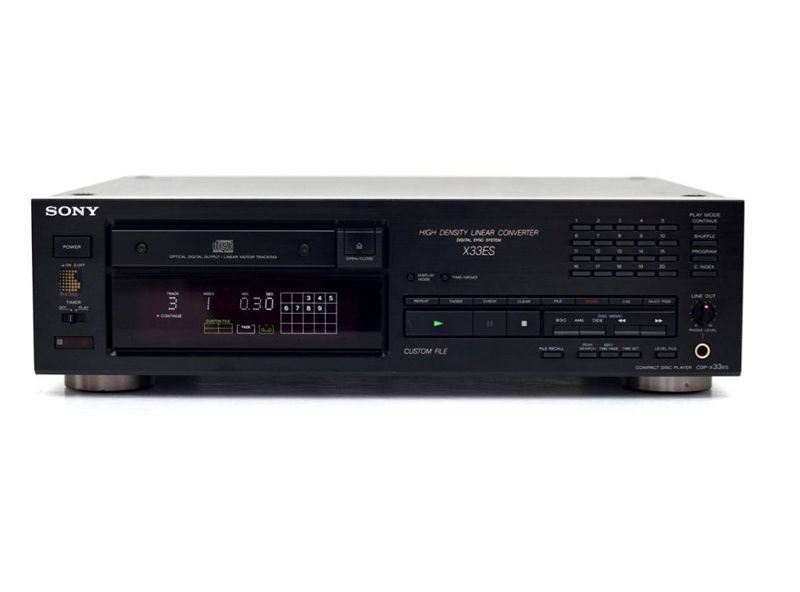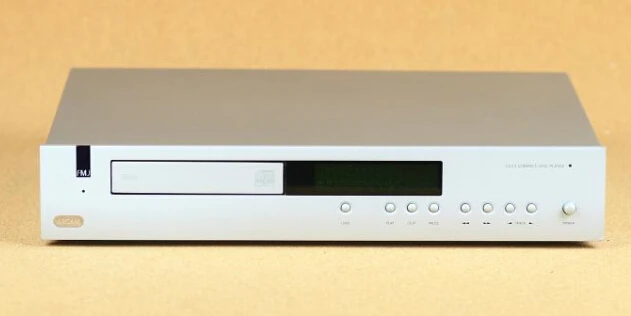In 1988, the recordable CD (also known as CD-R) was introduced. The format, known as CD-WO (CD-Write Once), was fully compatible with the original ‘Red Book’ CD standard, offering up to 74 minutes of recording (650 MB), although later CD-Rs gave up to 80 minutes of recording (800 MB) (737MB). CD-RW (CD-ReWriteable) discs were also available, which could be used several times, similar to the Compact Cassette or MiniDisc format, but had a reduced reflectivity, making them difficult to read in many CD players. For the same reason, some older CD players have trouble playing CD-Rs.
However, it took a long time for the technology to make its way into consumer audio. Meridian’s CD Publisher (1990) was a pioneering, big, and costly design. Several variants appeared in the early 1990s, costing upwards of £10,000 in the UK, before a Philips-built machine broke the £1,000 barrier in September 1995. Due to RIAA copyright difficulties, the subsequent wave of consumer machines that followed it all used a specific sort of CD-R disc, the so-called “music” or “audio” CD-R, which was more expensive than data CD-Rs. Physically, there is no difference between the two discs; the type is determined by the Disc Application Flag in the disc’s sub-code.
By the late 1990s, the cost of hi-fi CD recorders had decreased to the point where most audiophiles could buy one. Philips had led the charge on the consumer side, but HHB, Traxdata, Pioneer, Denon, Yamaha, and Marantz had also taken CD-R seriously, particularly on the professional side. The latter was able to build a number of notable machines thanks to its tight relationship with Philips, who actually produced several of the CD writer mechanisms. When the Marantz DR6000 was released in spring 2000, it was largely regarded as the best of its kind money could buy. It had a high-quality design produced in Japan (most competitors were made in Malaysia), with an all-metal chassis and fascia, and high-quality components within, unlike many CD recorders on the market at the time.
Crucially, the DR6000 was marketed as a high-end CD player that could also record CDs. To put it mildly, most CD recorders were not known for their audio quality when playing CDs, thus Marantz’s pitch was that you didn’t need to buy a separate, ‘real’ hi-fi CD player. The combination of a good quality Philips Bitstream DAC – the TDA1305, as seen in products like the first Cambridge Audio DACMagic – with Marantz’s Hyper Dynamic Amplifier Modules (HDAMs) at the analogue output stage benefited this product. For analogue recordings, the trusted Asahi Kasei AK535VF 20-bit analogue-to-digital converter chip was used.
All of the other customary Marantz mid-price hallmarks were there, including careful component selection, optimal circuitry layout, including vibration isolation for the disc read/write mechanism, and short signal lines for the recording section that skipped extraneous hardware. It took inputs ranging from 32 to 48kHz sampling rates and converted them to CD’s 16-bit, 44.1kHz standard. The DR6000 played back all sorts of optical CDs and recorded both CD-R and CD-RWs. It had CD Text, which was a useful feature back then and now. There were unbalanced RCA audio line inputs and outputs around the back, as well as TOSLINK optical and coaxial electrical S/PDIF digital inputs and outputs. A full-sized 6.3mm headphone port with volume control was located on the front fascia.
This is one of the best-built consumer CD recorders ever – it feels robust and sharp to the touch, especially when compared to most similar products’ flimsy, plasticky construction. Its case is made of pressed steel with a thick brushed aluminium fascia, and it weighs 4.6kg and measures 440x87x317mm. It was available in black or the company’s signature light champagne gold. Even now, the switchgear seems sharp to use, the neon display is antiquated but functional, and the disc tray is well-engineered. In terms of measurable performance, the Marantz has figures that would make a mid-eighties owner of a Nakamichi Dragon cassette player green with jealousy. It has a stated dynamic range of 92dB and a frequency response of 20Hz to 20kHz (+/- 0.5dB) when recording from its analogue line inputs. The S/N ratio for playback is 105dB; while this statistic is a touch out of date currently, it’s still adequate.
The Marantz DR6000 has a big and extensive remote control that makes using the recording features more easier than using the fascia buttons. Regardless, it’s a rather simple process. There are two recording options: CD Sync and manual record. The former is suitable for replicating an audio CD directly, including all track numbering and record level settings. The latter is for manually writing metadata (i.e. track start IDs) on LPs or cassette tapes, and you must configure the recording levels like you would with a cassette deck, for example. CD Text can also be typed using the keypad on the remote control. There’s a four-second input buffer to ensure you don’t miss the start of whatever you’re trying to record, and the machine can even create track ID numbers automatically in manual mode if it detects a gap in the music longer than 2.7 seconds. The old Compact Cassette format still wins out in terms of speed; the DR6000 takes a few seconds to get its ducks in a row before you start recording, and another few seconds to finish the disc.
The Marantz, like many CD recorders, is media sensitive. You might want to try out different brands, as there is still a lot of media to choose from on eBay, for example. However, make sure you get Audio CD-Rs; while they are more expensive and normally come in jewel cases rather than on a spindle, standard data CD-Rs will simply not operate in an audio CD writer. I’ve had good luck with brands like TDK, Sony, and Maxell, all of which are still available. The DR6000 produces excellent records when recording from an analogue source such as an LP. Although there is a tiny softening of the sound, a slight lightening of the bass, and a slight loss of soundstage depth, the overall result is still significantly superior to MiniDiscs, MP3s, and other similar formats.
It’s quite capable as a standalone CD player. It’s a little lighter and has a slightly more two-dimensional sound than Marantz’s own CD-6000OSE LE, which was the company’s ‘cheap audiophile’ CD player at the time. When compared to a new machine, it’s a touch less crisp and detailed in the upper midband, but there’s not much difference until you compare it to a modern DAC like Chord’s Hugo 2. When you connect one to the DR6000’s digital outputs, things sound a lot more detailed, dramatic, and rhythmically engaging than when you use the Marantz’s built-in DAC.
CD recorders were once cutting-edge, whiz-bang technology that delighted hi-fi reviewers and customers alike, but they are now firmly entrenched in history’s technological graveyard. What’s interesting to me is that if you use CDs – and a lot of people do – they’re still quite useful. The media is cheaper than when it was first released (about £1 per disc now, compared to £4 in 2000), and a good, lightly used Marantz DR6000 may be had for as little as £200 secondhand. That’s a lot of versatility for not a lot of money if you’re a collector, archivist, or general music fanatic.
The DR6000, in my opinion, is in a true price/performance sweet spot. It makes fantastic recordings, plays them back smoothly, is solidly built (in Japan), and is tiny enough to not take over your system — unlike some of the larger CD-R Audio pro recorders. The only other model to consider is the DR-17, which was released after the DR6000 was discontinued in 2003. It’s a lovely machine, but it’s a lot more expensive and harder to come by in excellent condition; expect to pay upwards of £600 or more. Another alternative is the DR6050, which is the dual-disc version of the DR6000 – a sort of higher-end competitor to Sony’s successful RCD-W100, which was marketed from 2004 onwards. As with anything else, get the one in the best cosmetic condition you can find, preferably in its original box, and make sure it works well, preferably by obtaining a demonstration.








